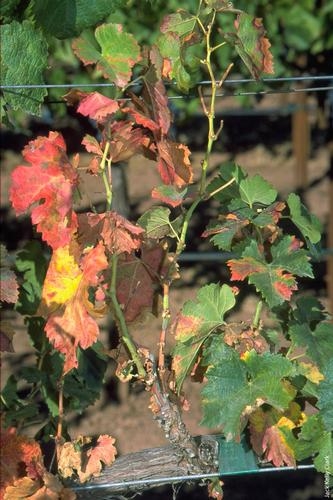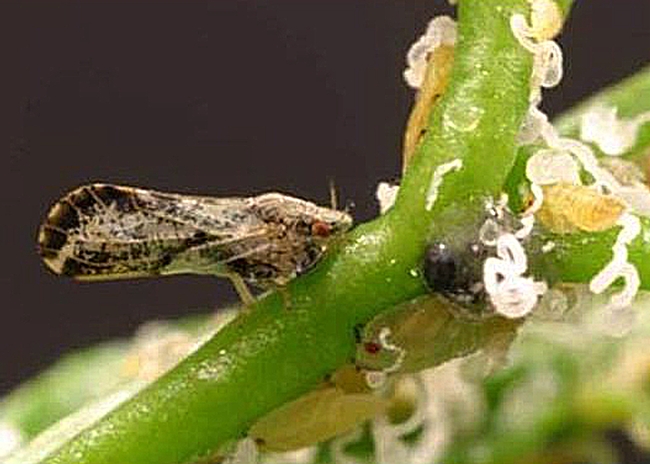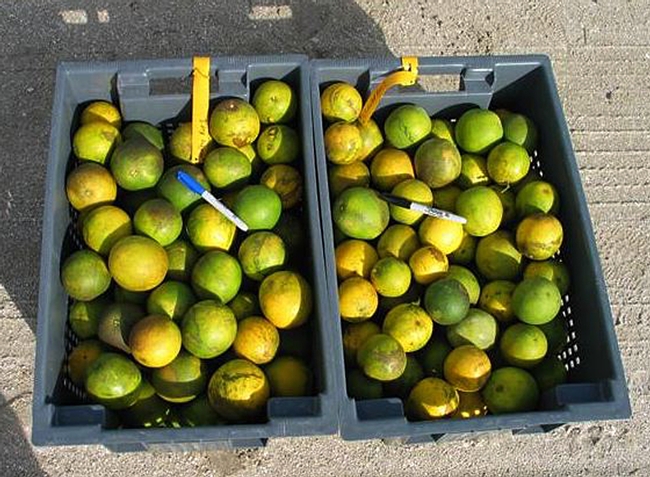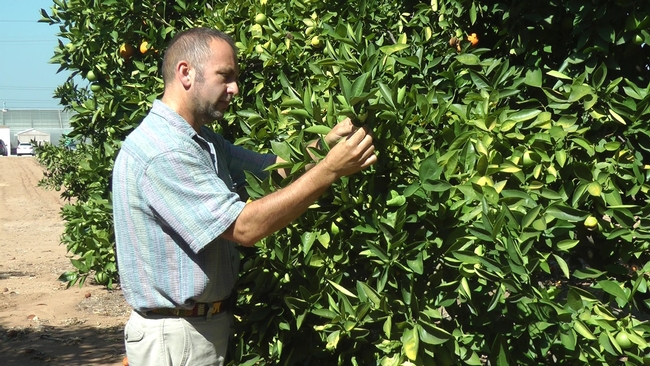
Posts Tagged: invasive pests
Two Northern California Workshops for Retail Nursery and Garden Centers
Attend one of two Northern California Retail Nursery and Garden Center IPM Workshops this...
From superweeds to Pierce’s disease: California Agriculture reports on fighting diseases and pests

An article in the current issue of California Agriculture, the peer-reviewed journal from the University of California Agriculture and Natural Resources, examines the spread of herbicide-resistant weeds in California and shows how UC researchers and Cooperative Extension specialists are helping growers to understand and manage the factors that drive it.
Five more articles in this special issue of California Agriculture highlight the work of UC Agriculture and Natural Resources on pests and diseases that threaten the state's people, agriculture and natural resources. The commitments to research and outreach profiled in the issue include the Endemic and Invasive Pests Strategic Initiative, the UC Statewide IPM Program and several successful collaborations with regulatory agencies and the agricultural community.

Diagnostics in animal health: How UC helps exclude and minimize impact of livestock pathogens
Whether it's pinkeye, bluetongue or poisonous plants, UC maintains a strong network of laboratories and field experts to protect livestock health in California.
Regional alliances of federal, state and university plant diagnostic labs work together to identify and control disease spread.
Managing newly established pests
Growers, scientists and regulators collaborate on European grapevine moth program
A regulatory program coordinated by government agencies, scientists and growers successfully contained an infestation that threatened California vineyards.

The 1999 arrival in California of a new Pierce's disease vector, the glassy-winged sharpshooter, posed a major new threat to California vineyards and orchards. A 15-year collaborative effort has successfully contained the sharpshooter and led to major improvements in our understanding of the biology of Pierce's disease, including promising advances in the development of disease-resistant grapevine lines.
Maintaining long-term management
Herbicide-resistant weeds challenge some signature cropping systems
Little or no crop rotation and limited herbicide options have contributed to the rise of herbicide-resistant weeds in orchards, vineyards and rice fields.
Over 35 years, integrated pest management has reduced pest risks and pesticide use
The UC Integrated Pest Management Program helps provide management solutions for invasive pests that destabilize IPM programs in agricultural and urban landscapes.
E-edition research article
The cost of the glassy-winged sharpshooter to California grape, citrus and nursery producers
The spread of the invasive insect in the late 1990s led to increased costs and changes in agricultural practices for grape, citrus and nursery producers.
These articles and the entire October-December 2014 issue are available at http://californiaagriculture.ucanr.edu.
California Agriculture is the University of California's peer-reviewed journal of research in agricultural, human and natural resources. For a free subscription, go to http://californiaagriculture.ucanr.edu or write to calag@ucanr.edu.
University of California Agriculture and Natural Resources is the bridge between local issues and the power of UC research. UC ANR's advisors, specialists and faculty bring practical, science-based answers to Californians. Visit ucanr.edu to learn more.
California pest invasion rate increasing
Introduction of new invasive pests into California seems to be increasing, reported Todd Fitchette in Western Farm Press. The story was based on presentations at the recent professional crop advisors convention in Anaheim by UC Cooperative Extension specialists Mark Hoddle and UC Riverside entomology professor Richard Stouthamer.
Before 1989, Hoddle said, California saw about six new pest invasions per year. The number has risen to about 10 per year, and the cost amounts to about $3 billion annually.
Asian citrus psyllid, a relatively recent invader in California, has farmers particularly worried because of the pest's ability to spread the lethal bacterial disease huanglongbing in citrus. In late 2011, Hoddle's lab began releasing a natural enemy of the psyllid he collected in the Punjab, Pakistan, a stingless wasp called Tamarixia radiata.
According to the Western Farm Press article, Hoddle is now studying a second natural enemy of ACP - Diaphorencyrtus aligarhensis - in quarantine at UC Riverside.
Stouthamer is studying another troublesome invasive pest in California, the polyphagous shot hole borer. The pest attacks many tree species that shade California streets, landscapes and parks; their greatest threat to agricultural production appears to be in avocados.
At the meeting, Hoddle said there is a growing and vocal minority of ecologists who believe invasive species are not such a serious problem, Fitchette wrote.
“They think we should just relax and let them install themselves in the environment and do whatever they like,” Hoddle said. “I think that's a wrong viewpoint to be taking with a lot of these organisms.”
Shipment of Giant Land Snails Siezed at LAX
Lest we forget how valuable the customs procedures are at our ports of entry, look at this article from abc news:
http://abcnews.go.com/Weird/wireStory/giant-african-snails-seized-los-angeles-airport-24556879
These giant African land snails (article doesn't say, but very likely a species of the genus Achatina) are enormous, and can get up to 2 lbs in weight and according to the article are "seriously harmful" because they "eat any kind of crop they can get to". Good thing this shipment was stopped at the airport and came no further into our state, because quite frankly we aren't even close to having the tools to controlling these in an agricultural setting.

Giant African land snail. Imagine trying to manage something like this!
The Threat of Invasive Species
The public, says entomologist Kris Godfrey, needs to become more aware of the threat of invasive...

Asian citrus psyllid is an invasive pest. (Photo by M. E. Rogers, University of Florida)

Bin at right shows Huanglongbing (HLB) symptoms caused by Asian citrus psyllid. At left: normal fruit. (Photo by S. E. Halbert, Florida Department of Agriculture and Consumer Services)

